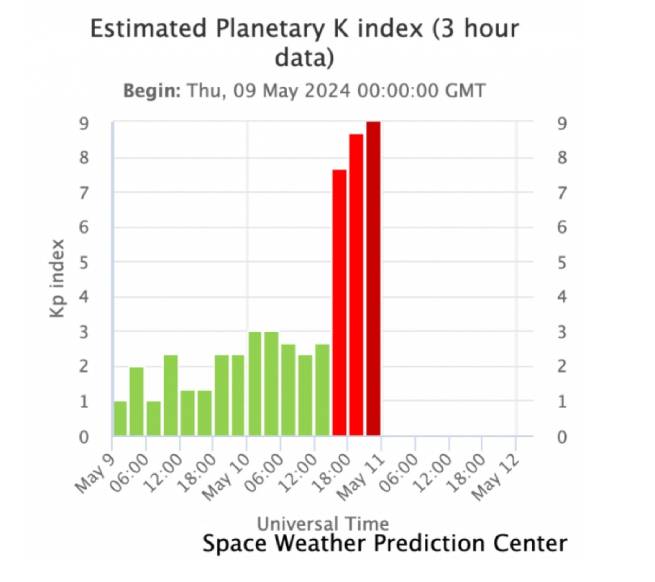The earth is in the grip of a solar storm. It is currently “extreme”, at level 5 out of 5, the Space Weather Prediction Center reported late Friday, May 10. This is the first G5 storm since October 2003.
Solar flares and coronal mass ejections from the sun create dazzling auroras across the globe. A rare solar storm can also disrupt communications.
Space Weather Prediction Center uses the “K-index” to describe how much the sun's activity affects the Earth's magnetic field. It ranges from 0 to 9, where 0 means calm or no influence, and 9 means severe geomagnetic storm. On the night of Saturday, May 11, it rose to a maximum of 9 for three hours. writes CNN, that is, an extreme geomagnetic storm occurred. It will likely last until Sunday.

Several coronal mass ejections – waves of solar plasma that the Sun ejected earlier this week – are heading towards Earth. This caused the aurora.
The storm could impact the power grid, as well as satellite and high-frequency radio communications. There may be glitches in GPS and spacecraft. The last time there was a G5 storm was in October 2003. It then led to power outages in Sweden and damaged transformers in South Africa.
There could be a “real danger” behind the dazzling aurora, scientists warn, especially with the modern world relying so heavily on electricity. They warn that an increase in solar flares and coronal mass ejections from the sun could disrupt communications on Earth over the weekend. Solar flares can affect communications and GPS almost immediately because they disrupt Earth's ionosphere or part of the upper atmosphere. The energetic particles emitted by the Sun can also damage spacecraft electronics and affect astronauts without proper protection for periods ranging from 20 minutes to several hours.
Comparable to today's event is the 1859 incident known as the Carrington Event, when telegraph communications were severely damaged. The day a solar storm nearly destroyed humanity:
Scientist Bill Nye says:
“Another thing that poses a real danger to our technological society, unlike in 1859, is how dependent we are on electricity, our electronics and so on. None of us in the developed world can go without electricity for long.”
He noted that there are systems in place to minimize the impact, but “things can go wrong,” stressing that not all transformers are equipped to withstand such a solar event: “It depends on the severity of the event and how prepared our infrastructure is.” to this kind of thing.”







More Stories
Anniversary of the Greek tragedy – the 1999 earthquake (video)
Copernicus: Hottest Summer on Record
China braces for super typhoon "Yagi": schools closed, flights cancelled